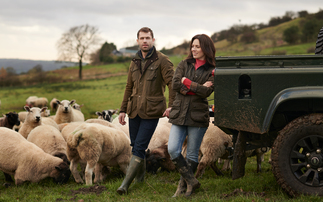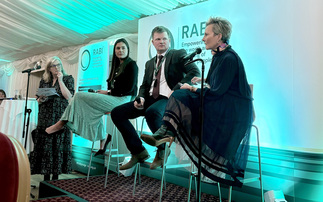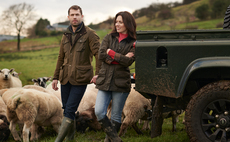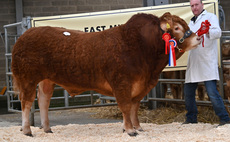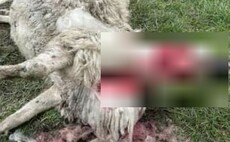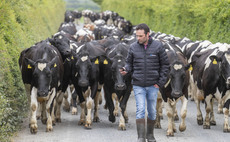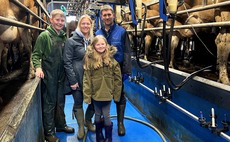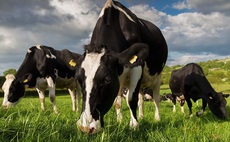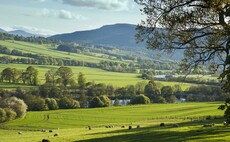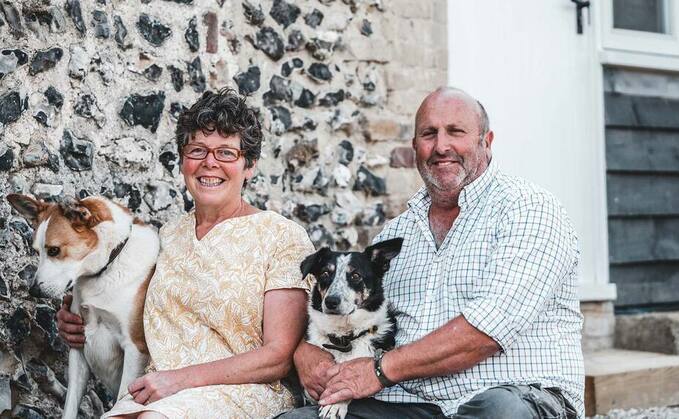
From dairying to rare breed preservation and latterly a bed and breakfast renovation project, the Mannering family has embraced their move to the Alkham Valley over the last three years. Jack Watkins reports.
With its rolling gradients, Chilton Farm, on the outskirts of Kearsney, Kent, is a mixture of a ploughman's nightmare and a romantic's dream.
But when Keith and Susannah Mannering first set eyes on it in 2013 it, by their own admission, looked a complete mess.
Keith says: "The farm was with the receivers and sales had fallen through several times. There was fly-tipping all over the place and Japanese knotweed and ragwort were rife."
Yet, as the couple sat on the steps of one of the derelict barns, they could see beneath this exterior.
It had potential. It could allow them to meet a long nurtured dream to own their own farm, managed extensively to support the natural environment, with the help of the rare native cattle breeds which are close to their hearts.
The pair met in the 1990s, as co-workers on a Kent dairy farm on the edge of Romney Marsh. Hampshire-born Keith was the herdsman when Susannah, from a local farming family, joined as a relief milker.
Susannah says: "We decided we wanted to work together and applied for county council farm tenancies."
The couple made the shortlist for several in the West Country and took on a Hampshire council dairy farm near Winchester in 1998.
Small beginnings
From small beginnings with a flying herd, they progressed to a closed herd of about 140 mainly black and white cows.
"We did not invest much in buildings and machinery there because we knew we had to put our money into something we could realise the value of at the end of the tenancy and that was the cows," says Keith.
Even before the tenancy ended in 2017, the Mannerings were transitioning over to their newly purchased Kent farm.
They let out one of the fields to an arable farmer, who they say did them a real favour by cultivating it and bringing it back into shape.
They brought some of their heifers across from Winchester for summer grazing and travelled between bases, a 320-mile round trip, fencing and tidying the site up, until finally deciding ‘to go for broke' just ahead of the end of the council tenancy in the autumn of 2017.
"I think we can say they [Albion cattle] are already back because low carbon footprints are the thing and they make use of places which can't be ploughed"
Susannah Mannering
Even so, the final change was still a culture shock because it meant leaving dairying, says Keith.
"To stop milking cows after 30 years really takes some adjusting to, losing that routine," he says.
"I still get up at 5.30am three years later. Plus, it meant the regular monthly milk cheque had stopped."
Approach
The Mannerings had already built up expertise in breeding for milk yield and fertility, but without the means to invest in new dairying facilities, and with a desire to farm more extensively, the bulk of their farm income since the move has come from breeding dairy heifers and selling them at market.
"We had brought across all our black and white and Shorthorn heifers, including youngstock from calves right up to calving age, so that gave us a starting point," says Keith.
"Our nearest dairy market is Frome," says Susannah, who makes the four-hour drive to the Somerset sales when they have freshly-calved heifers to sell.
"They are really friendly and we have built a good name there."
Even so, this income is not sufficient to live on, hence their decision to pursue a diversification project.
Since they first visited the farm, it struck them it was the perfect spot for bed and breakfast units - and set in the picturesque Alkham Valley, it is easy to see their reasoning.
With its quiet, intimate setting, it is hard to believe the next stop on the railway line after Kearsney is the busy port and transport hub of Dover.
Project
Despite the turbulent year it has been amid Covid-19 restrictions, the project has gathered pace during the past 12 months and using the design expertise of Keith's architect brother, Stephen Mannering, three units and a breakfast room have been created out of redundant cattle sheds and a storeroom.
"Basically, we built a box inside each building to insulate them and make them serviceable," says Keith.
As much of the original flint buildings, which may date back beyond the 19th century, have been retained as possible during the process and the couple sought EU Leader grant funding, which covered 15 per cent of the costs.
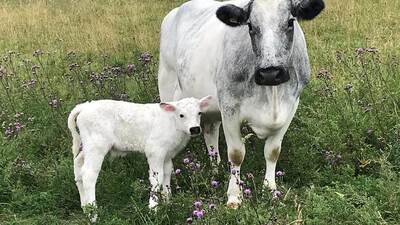
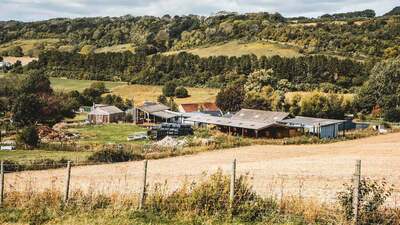

Since the couple first visited the farm, it struck them it was the perfect setting for B&B units.
With the farm situated in an Area of Outstanding Natural Beauty, with footpaths and bridleways, and the national trails of the Saxon Shore Way and the coastal path close by, the dog-friendly accommodation appeals to ramblers and horse riding enthusiasts.
But perhaps the most exciting aspect of their work since moving onto the farm has been the Mannerings' efforts to restore the rare chalk downland flora and fauna and the grazing of foraging cattle breeds suitable for maintaining the species-rich chalk grasslands.
"We have a Higher Level Stewardship scheme with Natural England. We have already had Adonis Blue and Large Blue butterflies and a bat survey last year found evidence of horseshoe bats which had not been seen in this part of the county for 40 years," says Keith.
Rare breeds
Fortunately, the ideal cattle breeds for conservation grazing were already in place because the Mannerings had been working with Albion and Shorthorns for some time previously, thanks to the inspiration of Susannah's late mother, Dinah Whittingham, who was a rare breed enthusiast.
"She founded the Speckles herd, the only Albion herd in the South East, but when she died, we inherited the herd and kept the Speckles name," says Susannah.
"Our senior bull, Speckles Ferdinand, is from a particularly pure and long Albion line. We currently have 15 pure Albions and are gradually looking to expand numbers to 40 breeding cows."
Susannah, who is also secretary of the Albion Cattle Society, explains there is currently under 150 breeding females in the world, all of them found in Britain, meaning they receive the Rare Breeds Survival Trust's (RBST) ‘critical' rating.
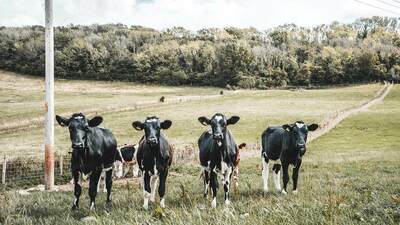
The bulk of their farm income since the move has come from breeding dairy heifers and selling them at market.
Yet it was a battle to get the trust to put the breed on its watchlist, says Susannah.
"They originated in the Bakewell area of Derbyshire around the turn of the 20th century, where a local breeder, Will Clark, had noticed people liked having blue cows in the herd," she says.
"To begin with, they called them Bakewell Blues or Blue Albions. We do not know why they chose the name Albion. They did not understand the genetics of getting the pure blue roan colour, but the Albions became a very popular pre-war dual-purpose breed."
By the 1920s there were 23 Albion herds as far south as Essex, but a combination of two foot-and-mouth outbreaks, a rise in popularity of the Friesian breed from the late 1950s, and the trend towards specialisation caused their subsequent decline.
When the breed society closed in the 1960s, they were assumed to be extinct.
A handful of diehards had carried on though and the society was revived in the 1990s. By communicating with longstanding breeders and collating a mixture of photographic and documentary evidence, Susannah managed to get the breed recognised by the RBST in 2018.
She says the society has a wanted list for 60 Albion heifers from potential buyers, so demand is on the rise, even though the number of commercial herds remains in single figures, and the Speckles herd remains the only one in the South East.
But they, along with the mix of the couple's original population of Dairy Shorthorns and other Shorthorn crosses they also run on the farm, are ideal for Chilton Farm's low input model.
Susannah maintains that the future could belong to these dual-purpose breeds, so long deemed unfashionable.
"I think we can say they are already back because low carbon footprints are the thing and they make use of places which can't be ploughed," she says.
"They do not need lots of nuts or expensively made silage. It is a matter of marketing them correctly."













